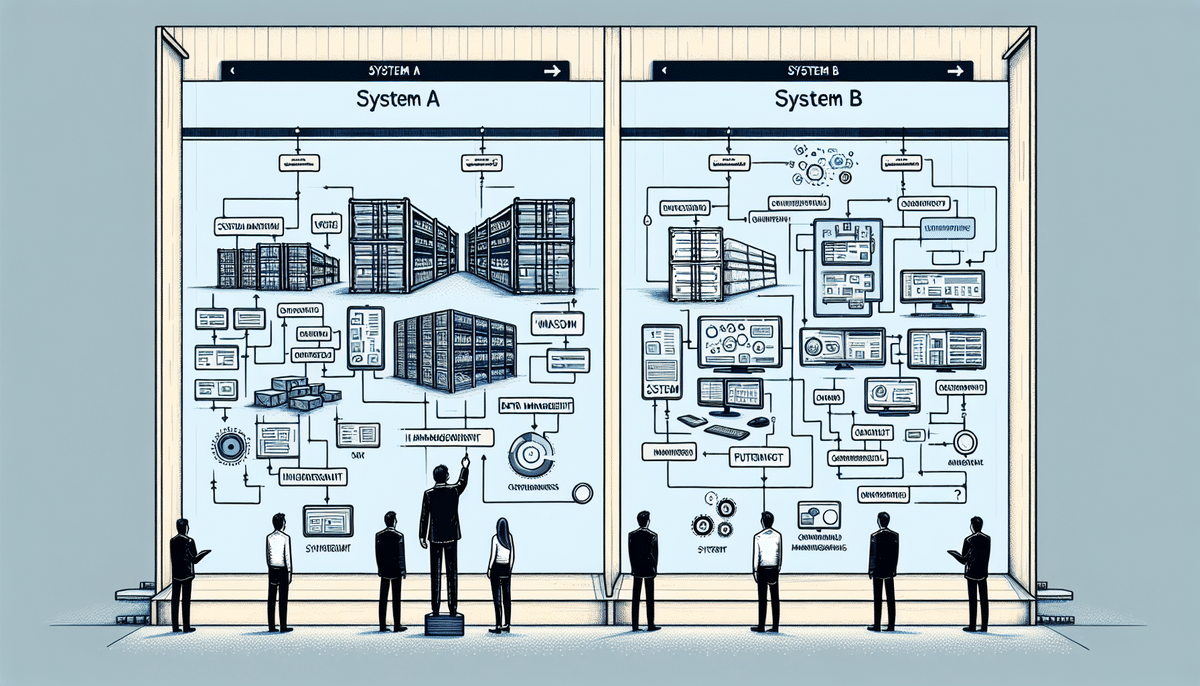Introduction to Warehouse Management Systems: NetSuite WMS vs 3PL Central
Effective warehouse management is essential for businesses handling large-scale inventory, requiring robust systems to streamline operations. Among the top choices available are NetSuite WMS and 3PL Central (3PL Warehouse Manager). Both platforms offer a variety of features, functionalities, and pricing structures. This comprehensive comparison will help you determine which system best fits your business needs.
Understanding NetSuite WMS
NetSuite WMS is an integral part of the NetSuite ERP Suite, providing a complete set of tools to manage inventory, sales, accounting, and more. As a web-based system, NetSuite WMS is accessible from any device with internet connectivity, ensuring flexibility and ease of access.
The system emphasizes automating warehouse operations to optimize space utilization and enhance supply chain efficiency. Key features include real-time inventory tracking, advanced reporting, and analytics tools that help businesses identify trends and areas for improvement. Additionally, NetSuite WMS seamlessly integrates with other NetSuite applications, offering a unified solution for comprehensive business management.
Understanding 3PL Central (3PL Warehouse Manager)
3PL Central is a cloud-based warehouse management system specifically designed for third-party logistics (3PL) providers and their clients. It offers robust tools to manage workflows, tasks, inventory, and other critical aspects of supply chain management. The system automates processes from receiving and putaway to order fulfillment, enhancing overall operational efficiency.
A standout feature of 3PL Central is its ability to integrate with various e-commerce platforms and shipping carriers, facilitating seamless communication across the supply chain. Real-time visibility into inventory levels and order statuses enables better decision-making and improved customer service. This makes 3PL Central an ideal choice for businesses focused on logistics and distribution.
Comparative Analysis: NetSuite WMS vs 3PL Central
Key Differences
The primary difference between NetSuite WMS and 3PL Central lies in their target audiences and feature sets. NetSuite WMS is part of a broader ERP suite, making it suitable for businesses of all sizes looking for an integrated solution covering various business functions beyond warehouse management. In contrast, 3PL Central is tailored specifically for third-party logistics providers, focusing solely on warehouse and supply chain management.
NetSuite WMS offers comprehensive inventory tracking and management capabilities, which are ideal for businesses requiring detailed oversight of their inventory across multiple locations. On the other hand, 3PL Central excels in streamlining logistics operations but may lack some of the broader business management features found in NetSuite WMS.
Key Features Comparison
NetSuite WMS Features
- Receiving and Putaway Management: Streamlines the process of receiving goods and efficiently storing them.
- Order Fulfillment Management: Ensures accurate and timely processing of orders.
- Real-Time Inventory Updates: Provides up-to-date inventory information for informed decision-making.
- Support for Multiple Warehouses: Manages operations across various warehouse locations seamlessly.
- Advanced Features: Includes cycle counting, wave picking, and multi-carrier shipping.
- Integrated Applications: Built-in integrations with other NetSuite applications such as CRM and financials.
Additionally, NetSuite WMS offers detailed analytics and customizable dashboards, allowing businesses to monitor key performance indicators (KPIs) and track progress towards operational goals.
3PL Central Features
- Inventory Management: Efficiently manages stock levels and inventory movements.
- Order Management: Streamlines the order processing workflow for enhanced efficiency.
- Receiving and Putaway Management: Automates the receipt and storage of goods.
- Reporting and Analytics: Provides insights into warehouse operations and performance metrics.
- Integrations: Connects with popular applications including QuickBooks, Amazon, and Shopify.
- Advanced Billing and Invoicing: Simplifies the billing process and improves cash flow management.
- Customizable Dashboards and Alerts: Provides real-time visibility and proactive decision-making capabilities.
- Mobile App: Access key functionalities on the go with barcode scanning capabilities.
3PL Central's mobile app further enhances operational flexibility, allowing warehouse managers to perform essential tasks remotely and maintain connectivity with ongoing operations.
Pricing and Implementation
Pricing for both NetSuite WMS and 3PL Central varies based on factors such as the number of users, warehouse size, and required features. Generally, NetSuite WMS starts at around $999 per month, while 3PL Central begins at approximately $500 per month. However, costs can escalate with additional features and larger operations.
Implementation time also differs between the two systems. NetSuite WMS typically requires a longer implementation period due to its comprehensive nature and the need for a detailed assessment of business processes. This process can take several months. In contrast, 3PL Central usually offers a faster implementation timeline, thanks to its specialized focus and streamlined deployment process. Regardless of the system chosen, businesses should allocate adequate time and resources to ensure a smooth transition.
Customization and Integration
NetSuite WMS provides extensive customization options, allowing businesses to tailor the system to their specific needs. Its robust integration capabilities enable seamless connections with other NetSuite modules, such as CRM and eCommerce platforms, fostering a unified operational environment. This level of integration supports comprehensive data analysis and efficient cross-departmental workflows.
On the other hand, 3PL Central offers fewer customization options, as it is primarily designed for logistics providers. However, it still provides essential integrations with popular eCommerce platforms and shipping carriers, effectively supporting the logistics needs of businesses that rely on these integrations.
User Reviews: Pros and Cons
NetSuite WMS
- Pros:
- User-friendly interface
- Comprehensive feature set
- Real-time inventory tracking
- Seamless integrations with other NetSuite modules
- Cons:
- Steep learning curve
- Higher pricing compared to some alternatives
3PL Central (3PL Warehouse Manager)
- Pros:
- Ease of use
- Comprehensive features designed for logistics providers
- Excellent customer support
- Real-time visibility into operations
- Cons:
- Pricing can be high for smaller businesses
- Limited customization compared to more comprehensive systems
Conclusion: Choosing the Right Warehouse Management System for Your Business
Selecting the appropriate warehouse management system (WMS) is a critical decision that can significantly impact your business operations. Both NetSuite WMS and 3PL Central offer robust solutions with a range of features tailored to different needs. Businesses should evaluate their specific requirements, including the need for comprehensive ERP functionalities, scalability, ease of use, pricing, customization options, and integration capabilities. NetSuite WMS is ideal for businesses seeking an all-in-one solution integrated with broader ERP modules, while 3PL Central is best suited for third-party logistics providers focused on specialized warehouse management. Careful consideration of these factors will help ensure that the chosen WMS aligns with your operational goals and supports your business growth effectively.




















